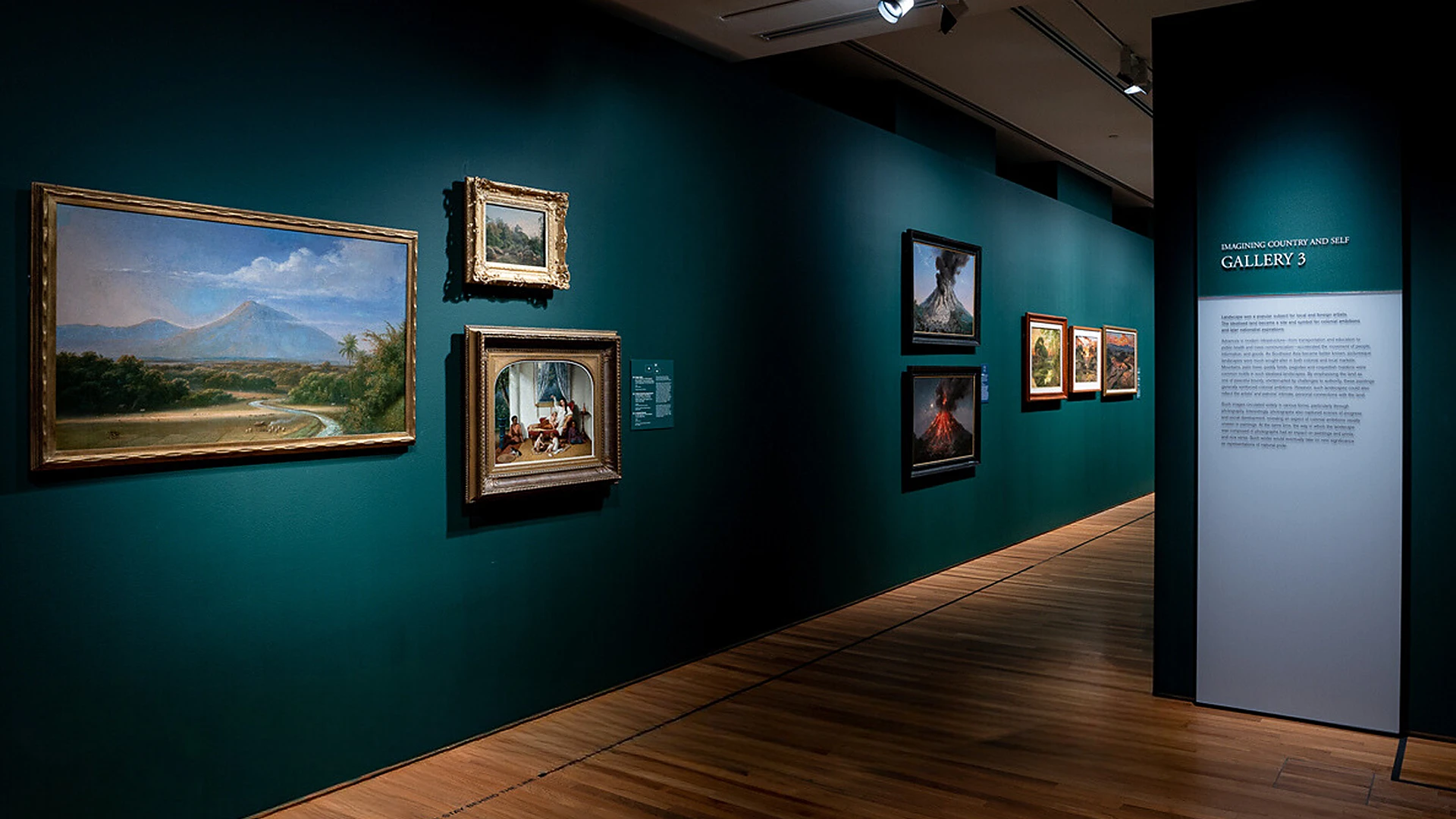How did artists think about their art in relation to questions of identity and nationhood?
In the early 20th century, artists in Southeast Asia became more aware of their identity as modern artists, and began to express a stronger sense of place in their works.
By the 1920s, the consolidation of colonial rule by the Dutch, British, French and Americans was complete for most parts of Southeast Asia. Consequently, the region experienced ever more rapid change and continuing social inequalities. This led to increasing calls for reform and independence, which were echoed by anti-imperialist movements in the West.
Fuelled by a growing sense of nationalism, local artists expressed a deeper connection to their home in their work. From the popularity of picturesque landscape paintings to a synthesis of local themes and materials with a new visual language, artists showed a heightened sensitivity to place. At the same time, the establishment of new art academies and exhibition systems gave rise to the identity of the “professional artist”. As a result, artists actively strove to express their newly found “self” through innovative forms.
-
When: Ongoing - Where: UOB Southeast Asia Gallery










